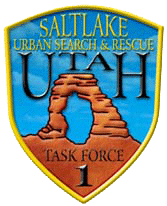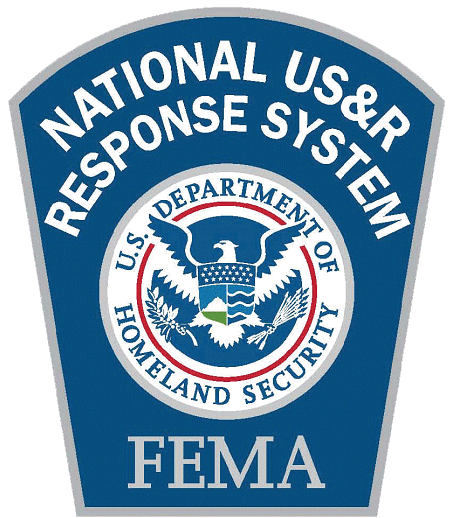
Benefits of Salt Lake Urban Search & Rescue Participation in the FEMA US&R Program
The value of the current FEMA US&R Equipment Cache is in excess of $4,700,000 if it were purchased today. This equipment is kept in a constant state of readiness for deployment for a national or local disaster. Our agreement with FEMA allows us to use this equipment for training and, in the event there was a local disaster, it is would be a resource that would be readily available to our community. The equipment would be available immediately instead of the 4-6 hour timeframe that it takes to deploy a Task Force once the President declares a disaster.
Within this cache of equipment are an array of specialized tools and heavy rescue equipment that fire departments do not normally have, due to the cost and special nature of the equipment. The equipment cache contains technical visual and acoustic search equipment, concrete cutting and breaking equipment, victim extrication equipment, radio communications systems, patient treatment equipment, and many other capabilities that are unique to the US&R task force system. In addition, FEMA has established a practice to constantly monitor new technologies, and update the authorized equipment list. As the list of equipment is updated, funding to procure the equipment is appropriated to the task force or the equipment is purchased by FEMA and provided to the task force. The task force purchased and maintains a fleet of response vehicles to transport the equipment cache and to use for incident management. This fleet accounts for an additional $600,000 in response vehicles made available for exclusive use by the Task Force as part of the FEMA-US&R system.
The Task Force currently has approximately 210 members, of which 186 are Unified Fire and Salt Lake City Fire employees. Each receives approximately 40 hours of annual training specific to US&R management and operations. This training consists of heavy rescue, collapse technician, victim search operations, weapons of mass destruction & hazardous materials operations/response training, disaster communications training, disaster management training, disaster medical field procedures training, and many other areas. Much of this training supplements current Department training requirements. A well-trained Task Force member is capable of providing better service to citizens of our community at both ordinary emergencies and unique disaster incidents.
Members of the Task Force have the opportunity to network with other rescue professionals in the US&R program from across the United States. This network provides a means to exchange knowledge, information, and techniques to deal with all kinds of emergency and disaster situations. This capability assures that we are better prepared for local incidents in our community. Several task force members currently serve on National US&R Work Groups providing regional perspectives to help guide the future of the national US&R program.
The Task Force has deployed as a Type I team on one FEMA 17 day deployment (WTC), Type III on five FEMA deployments, three Federal single resource deployments (Oklahoma City & Space Shuttle), two modified Type III State of Utah responses and on a number of occasion’s deployed smaller groups or individuals to help the IST (Incident Support Team) other communities within our region or country when needed. Each time our Task Force members are deployed and are asked to serve, they gain invaluable experience that they bring back with them that enhances the service to our community.
Over the course of UFA/Salt Lake City’s 18 years of involvement with the FEMA US&R program, many occasions have allowed for the direct exchange of information with federal sources that might not otherwise have been easily available. This professional relationship enhances the ability of our emergency responders to obtain Information benefits our community in preparation for a local incident.
As a FEMA US&R Task Force we are a part of the National Response Framework (NRF). This has provided members of the UFA & Salt Lake City insight into the NRF and how it is utilized and accessed during a national disaster and how it would apply to an incident in our community.
The Task Force has professional members as part of the team. This includes emergency trauma physicians, structural engineers and canine search specialists from our local community and geographic region. These members provide their expertise and receive training within their specialty to work in disaster response. By including these professionals and providing joint training opportunities in emergency and disaster operations, relationships are fostered that provide for a smooth coordinated response for local incidents.
The Task Force received approximately $300,000 in detection, monitoring and decontamination equipment, and another $250,000 to train members of the team in preparation for WMD response after the 2002 Winter Olympic Games. This equipment and training is now available for local response and would not have been available to benefit our community without our US&R program.

